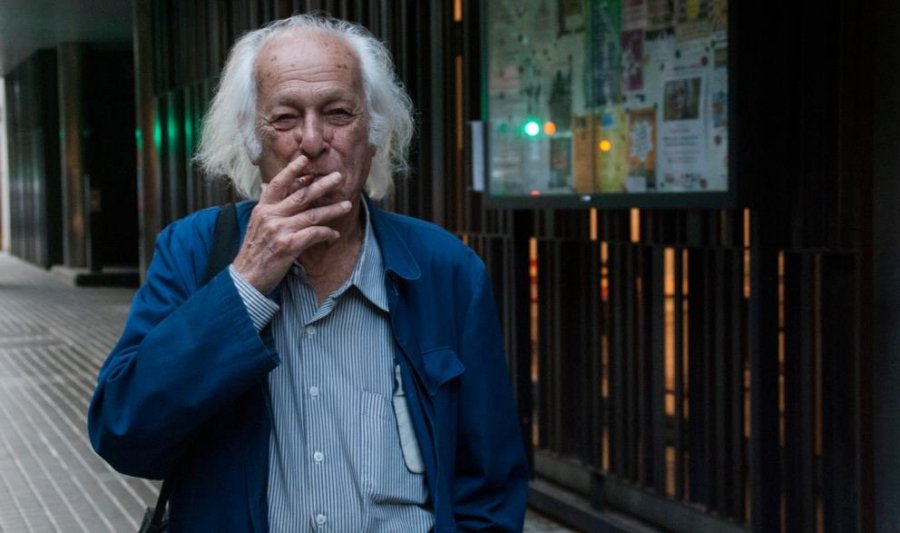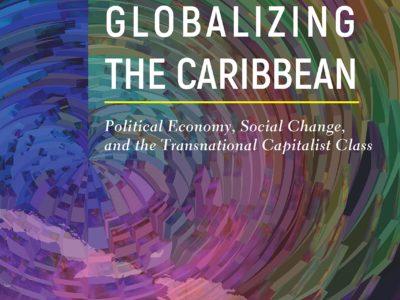By Vera Vratuša-Žunjić
Daraja press, October 2017, ISBN ebook: 978-1-988832-06-7
Abstract:
Samir Amin, Egyptian and French political economist of pro Marxist and anti Eurocentric orientation, argues in his five chapter book entitled October 1917 Revolution, a Century Later, timely published on the commemoration eve of the 100 years after the October Revolution, that great revolutions can only be delayed, they may have temporary setbacks through conservative resistance and counterrevolutions, but revolutionary progress cannot be stopped. October Revolution therefore still illuminates the unfinished struggles of the peoples, the heirs of the Communism of the Third international, for the substantial realization of these goals. Amin then sets out to situate the October Revolution in a current context of the triumph of the “liberal”, that is capitalist counterrevolution. Amin concludes that this triumph is only apparent, since the capitalist system is already on a road of its chaotic decomposition, opening the way to the possible crystallization of a new revolutionary situation.
Amin starts his argumentation by the articulation of his concept of socialism as meaning more than the abolition of private property through the nationalization or the revolutionary state control of the ownership of the main means of production. In a positive sense socialism means the progressive socialization of social planning and economic management, building of alternative labor relations to those defining wage status, allotting planning power to society of workers as a whole to socially regulate the market, instead just to managers and entrepreneurs, or to a state apparatus functioning on the behalf of society.
Amin stresses that the October 1917 Revolution was ”a gigantic storming of the skies” socialist project that echoed the glorious Paris Commune of 1871. Amin focuses on the dramatic consequences of the isolation of the October revolution. Soviet communist party and state leaders from Lenin to Stalin had to face the challenge of history confronted with the problems characteristic in countries of peripheral capitalism, forcing them to “revise“ the theses inherited from the historical Marxism of the Second International expecting the break out, or at the least the spreading, of social revolution in developed capitalist countries of the Center. They namely drew a major conclusion from their analysis that imperialist war of 1914-1918, which they anticipated, made necessary and possible a revolution led by the proletariat in czarist Russia, “the weak link” of the imperialist chain. Amin claims that since the expansion of capitalism is polarizing, it is inevitable that the people who are its victims on the periphery of the system should revolt against its consequences.
Amin criticizes Lenin’s and Bukharin’s considering оf imperialism, which they associated with the development of monopolies, as the new or the highest stage of capitalism. Amin resumes his findings from his books Accumulation on a World Scale (1974) and Unequal Development (1976), that historical capitalism has always been imperialist, leading to a polarization between hegemonic centers and peripheries since its origin in the sixteenth century, on the basis of unequal exchange between industrial and agricultural products of the center and periphery, due to greater differences in wages than in labor productivity, which has only increased over the course of globalized development of capitalism. Lenin and Bukharin according to Amin, underestimated the effects of this imperialist polarization on destruction of revolutionary prospects in the Center. They soon learned the historical lesson and realized that revolution made in the name of socialism and communism was in fact mainly national bourgeois peasant revolution. They therefore made New Economic Policy concessions to the market and to the newly acquired peasant property of family farms.
Soviet Russia according to Amin delinked from the imperialist Western dominated capitalist system. To face unavoidable attacks Soviet Union had to industrialize and arm fast, there was no alternative according to Amin. Stalin chose the policy of the authoritatively centrally planned transfer of the agricultural surplus to benefit the extensive industrial accumulation and of large section of the rural population to constitute an urban working class from 1930 to 1933, in the period of the rise of fascism. The priority was given to heavy industry and the modernization of armaments. This necessity came into conflict with the interests of the peasantry and threatened to break the worker peasant alliance, the foundation of the revolutionary state and revolutionary democracy, through the forced state’s autocratic apparatus collectivization, opening the way to the formation of a “new class”, the Soviet state bourgeoisie.
Soviet ruling class understood that the imperialist powers , including the Nazis, could never accept even the NEP reforms, in spite of Lenin’s and Stalin’s attempts to reassure the west that they did not intend to “export” revolution and sought peaceful coexistence. Washington and London decided in 1945 to end the wartime alliance with the Soviet Union and initiated just after the Potsdam agreement the permanent Cold War, since the United States and their subaltern allies of the “free world” in NATO had the monopoly of nuclear weapons.
Soviet leaders according to Amin had not broken radically with the economism of the Second international of the Western labour movement, including the concept of the social neutrality of technology. The imperative of catching up and developing productive forces triumphed, the alternative of building a society free of economic alienation was compromised – the human being is reduced to labor power and nature regarded as the inexhaustible object of human exploitation.
Stalinist planning methods expressed in rudimentary physical quantity terms, however, lost their effectiveness as the economy became more complex and demand diversified. Amin claims that giving market mechanisms their place, does not mean associating them with private property and that it is necessary to know how the markets involved in the general Plan are controlled and be concerned to reinforce the socialization of the management of the economy. Amin points out to the Chinese and Yugoslav experience to illustrate that the drift towards the emergence of private capitalist forms is always present.
Soviet Union contributed decisively and alone to routing out Nazi hordes. The Soviet Union succeeded as well to annihilate the NATO nuclear monopoly. Amin emphasizes that Soviet Union, began to support the national liberation struggles of the peoples of Asia and Africa, only after the 1955 Bandung conference which marked the “Awakening of the South”, within the newly constituted Non Aligned Movement. The Bandung period was also that of African Renaissance and renovation projects inspired by the values of socialism. Even the horrible regime of Mobutu, claims Amin, led to the production of an educational capital in Congo forty times greater than what the Belgians achieved in 80 years. Ethnic deviations came later, caused by the erosion of the Bandung models and recourse to ethnicity by some of those in power, in order to reconstitute power in accordance with their interests.
Amin emphasized that Mao was able to learn from Bolshevik equivocations. The Chinese revolution was anti-imperialist and peasant or anti-feudal. But it was not bourgeois democratic, but popular democratic, which required maintaining the worker peasant alliance over a long period. Chinese leaders invented another way on the road of development of socialism, making agricultural land state property, giving peasantry equal access to use of this land, and renovate small scale family agriculture without private ownership which reduced migratory pressure towards the towns. In this way were reconciled the strategic aim of food sovereignty in the construction of a complete and modernized national industrial system also in Vietnam (see more in Amin et all, 2005).
The main significance of October revolution according to Amin is that it started off the transformation of the World’s International power relationships. The offensive of the worldwide right from 1980 was in the direction of deregulation and privatization. When the soviet society moved away from its original goals and soviet democracy, it became worse than industrial bourgeois society, since autocratic practice of comprador bourgeoisie brought it closer to peripheral capitalism. Amin correctly notes that NATO revealed its true aggressive nature when it annexed eastern Europe and carried out the missions of colonial and semi-colonial oppression in the Middle East, the Mediterranean, Caucasia, South East Asia and then Ukraine. In these countries, the NATO powers openly supported financial oligarchs, nazi groups and criminal Mafiosi to attain their privatization ends brutally dispossessing the people. The relationship of Eastern Europe with Western Europe is therefore according to Amin analogous to that by which Latin America was subordinated by the USA through their peripheryalization. Since the Russian State had been taken in hand by Putin, having ambition to reconstruct an independent form of state capitalism, the Triad continued to pursue the Cold War against Russia in attempt to impose it and the whole world, the status of the dominated periphery, which US succeeded in imposing during the years of the Yeltsin presidency.
Amin calls for an assessment of the Soviet cycle of revolution and counter revolution now that it is completed. He claims that it is neither positive overall, or negative. The USSR, China and even the countries of Eastern Europe, had built modern autocentric economies, through carrying out the sovereign popular project, the alternative to ‘liberal globalization’, such as no country of peripheral capitalism has succeeded in doing. The reason for this economic progress was according to Amin the fact that the Soviet bourgeoisie was produced by a popular, national and so called socialist revolution, whereas the bourgeoisies of the Third World, established in the wake of the worldwide expansion of capitalism, are generally of a comprador nature. The Soviet Union was a plurinational union of nations working together on an equal basis to construct a common socialism, inventing “international assistance”, the flow of capital went from the advanced regions to the poor peripheries, while the contrary happens in the empires of capitalist imperialism.
The main value of Amin’s book October revolution 100 years later is the capability of its author to contribute to critical reclamation of the popular achievements of the great social revolutions in the past, to contest the present dominated by capitalist hierarchical and destructive system of exploitation and oppression in decline and to creative detection in present social movements the possible carriers of future socialist development.
References:
—
Amin, S. (1974). The Accumulation on the World Scale, 2. New York: Monthly Review Press.
Amin, S. (1976). Unequal Development. New York: Monthly Review Press.
Amin, S., & et al., (2005). Les lutes paysannes et ouvières face aux défis du XXIe siècle. Paris: Les Indes Savantes.
Amin, S. (2017). October 1917 Revolution, A Century Later. Daraja press.
All rights belong to the original author.



